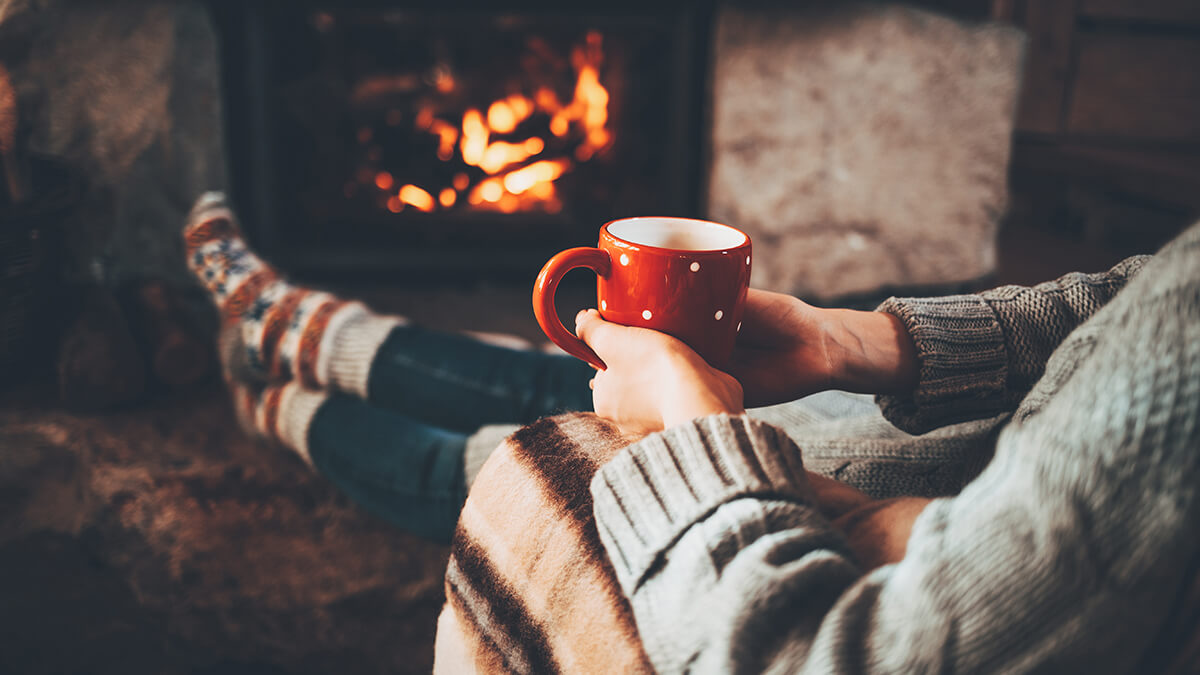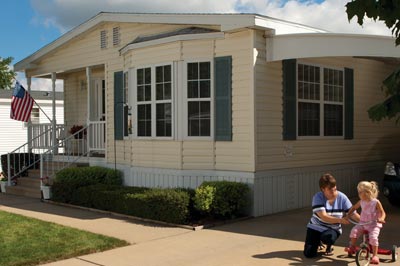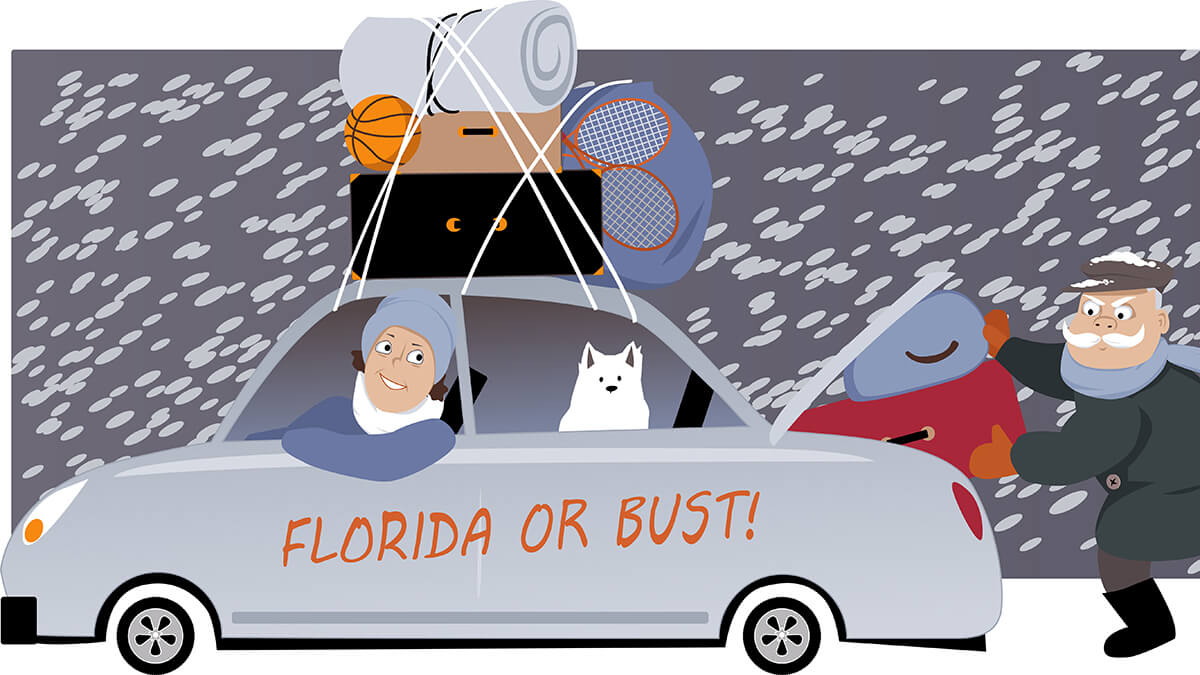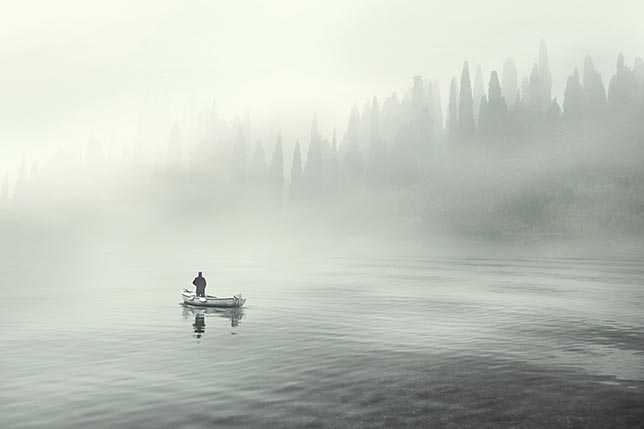Harris, Reed & Seiferth
|
|
If you're anything like my husband, you like having a crackling fire in the fireplace on a cold winter's night. Watching the light dance on the walls and enjoying its warmth is one of the most charming aspects of the otherwise cold and harsh season. Yep, there's definitely something alluring about having a fireplace in your home. According to the Hearth, Patio, and Barbeque Association (HPBA), a fireplace ranks second among the top features buyers seek in a home! Additionally, approximately 80% of American homes have a fireplace, hearth or pellet stove. I'll admit, a fireplace was one of the features we searched for when looking at homes. Unfortunately, the perks of having a fireplace also come with a bit of responsibility. Any homeowner with a fireplace should know that the desire for a crackling fire also requires a lifetime commitment to make sure it’s in proper working order. If you need to brush up on your fireplace safety before brushing off the hearth, check out these eight basics of preventative wood burning fireplace maintenance: Additional precautions should be taken when you use the fireplace:
If you are the proud owner of a gas fireplace, this resource provides great information and recommendations about how you can best care for that investment. Now go enjoy that warm and toasty glow. Source: https://www.foremost.com/learning-center/8-tips-for-keeping-a-fire-safely-in-its-fireplace.asp
0 Comments
An ounce of prevention saves a ton of trouble when it comes to making your home more comfortable. Why put up with drafts, leaks, excess moisture, mildew or pesky pests when you don't have to? You can put a stop to costly drafts or leaks before they start with the right sealant, caulking compound or roof coating. Unwanted moisture can be a problem even in today's well-built and insulated manufactured homes, but not if you take steps to control it. Pests inside or under your manufactured home can also cause trouble. Homeowners agree it's far easier to keep bugs or unwanted animals from getting into their manufactured home than it is to get rid of them once they've moved in! Here are some quick preventive maintenance tips that pay off in both time and money. How to keep out drafts and leaks Sealants, caulking compounds and roof coatings prevent leaks and drafts. Sealing your home is probably the easiest and least costly way to make your home more comfortable and energy efficient. Basically, any crevice, crack or connection (except the edges of siding panels) should be sealed. To determine if your old caulk needs replacing, poke it with a screwdriver or nail. It should have a rubbery consistency. If it is hard, brittle and cracked, remove and replace it as part of your regular preventive maintenance. You will probably need more than one type of sealant to do your entire home. Here are some common sealant types:
Source: https://www.foremost.com/learning-center/mobile-home-repairs-draft-and-leaks.asp
Good night, sleep tight. We all know the rest of the rhyme. When I was little, my dad used to say that almost every night before I went to bed. What used to be a silly poem to me is now a serious fear when traveling. If you've encountered bed bugs while traveling, you become paranoid of the little creatures and will do anything to avoid bringing them home. According to a survey from the National Pest Management Association (NPMA) done in 2011, one out of five Americans has had a bed bug infestation in their home or knows someone who has encountered bed bugs at home or in a hotel. Bedbugs are not only encountered at home, though, they have been found in hotels, public transportation, offices, and even clothing stores. So far, our home is in the clear. But with bedbug infestations on the rise, how do you have a relaxing vacation knowing you could bring home these pests that are so hard to get rid of? The NPMA has some informative articles on bed bug identification and prevention. Here are some tips to avoid bed bugs while traveling:
Source: https://www.foremost.com/learning-center/dont-let-the-bed-bugs-come-home.asp
When you ride the trail, put safety first! Follow the snowmobile safety tips listed below. Know the law Check with the local DNR, law enforcement agencies, dealers and clubs to make sure you follow all the rules in the area where you are riding. Gear up For optimum protection, always wear protective gear such as a safety-certified helmet, warm gloves, a windproof outer layer and boots. Think ahead Always carry your owner's manual, an extra belt, extra spark plugs, a tow rope, a small tool kit, spare parts, a flashlight, a first-aid kit and a few survival items such as a space blanket, waterproof matches and a compass. Tread lightly Respect nature and ride only in areas where it's permitted. Wait for enough snow to cover vegetation so you don't destroy it, avoid running over trees and shrubs and don't disturb wildlife around you. For more information, visit TreadLightly.org. Maintain control and stay sharp Keep your speed right for the conditions and your experience. Be aware of current terrain, visibility and weather conditions, potential hazards or obstacles. Ride only when your senses are sharp. Never do drugs or drink and then ride. Check it out Be sure your snowmobile is running properly before riding. Review your owner's manual. Follow the recommended service schedule and be sure an authorized service provider makes all repairs. Take a friend Don't snowmobile alone. It's more fun - and safer - to ride with a friend along. Take care crossing roads When crossing roads, make sure you stop completely and that no traffic is approaching from any direction. Remember basic hand signals when you are turning. Slow down at night At night your visibility is limited to the distance of your headlight. The slower you go, the more room you have to stop. Also, avoid riding along road shoulders at night where your headlight, and those of street traffic, could cause confusion. Beware of water Drowning is a leading cause of snowmobile fatalities. Never cross over a frozen lake, pond or stream. You run the risk of breaking through the ice, and starting, stopping and turning are more difficult due to less traction. Know your protected with Snowmobile Insurance In addition to snowmobile safety, be sure you have proper snowmobile insurance coverage to protect your vehicle and provide liability coverage in case someone gets injured or property is damaged during the use of your vehicle. Learn more about coverage options for your snowmobile on our snowmobile insurance page. Source: https://www.foremost.com/learning-center/snowmobile-safety-tips.asp
Moving into a new rental property is such an exciting process! Sure, it's also super time-consuming and can be pretty demanding, but finally settling in can bring so much joy. I recently made the move from my college house into a full-on adult apartment and I was giddy with anticipation! Anything that came my way from the apartment complex was immediately completed and returned, all the T's crossed and I's dotted – including the lease. It didn't dawn on me until after I had sent it back that I probably should have read it more thoroughly. Luckily, my lease outlined understandable guidelines and didn't have any weird rules or vague statements releasing the complex from responsibility. Before signing a lease, make sure you know what you're getting yourself into. Your lease is more than just a piece of paper with boring writing on it – it's a legally binding contract! Most leases are pretty straightforward, but once you sign it, you're locked in for the near future. Here are nine important questions to ask your landlord or leasing office before signing the rental agreement.
Source: https://www.foremost.com/learning-center/questions-you-shoud-ask-before-signing-a-lease.asp
Are you a snowbird? If you flock to a warmer climate during winter, you know that preparing your home before you leave is a tedious, sometimes difficult task. However, creating a thorough winter checklist can help protect your house against theft, water damage and other unwanted surprises. To help ensure everything goes smoothly, here are some important things to remember as you pack up and secure your home for the winter!
Forward your mail. This is something you can do without leaving your house! Try logging on to www.USPS.com and clicking the "Track & Manage" tab. The United States Postal Service (USPS) can forward your mail for up to one year. For flyers or anything else that comes to your door, ask a neighbor or a family member to occasionally check your home for anything that accumulates on your doorstep or in your mailbox. Do not turn off the heat! Set your thermostat between 55 and 60 degrees. If the house temperature is too low, your water pipes could freeze. Shut off the water. Doing this minimizes the risk of a flood. Be sure to turn off any valves inside, including automatic irrigation systems. To avoid any type of water leaks, it's always an option to have your pipes drained by a professional. Prep your appliances. Depending on how long you'll be gone, consider unplugging your refrigerator to cut down on energy costs. Be sure to clean it, throw out all of the food and leave the fridge doors open to prevent mildew. Other appliances you can unplug are your washer and dryer, microwaves and televisions. Perform exterior maintenance. If you live in a snowy area, arrange for someone to plow your driveway and sidewalks to avoid any liability issues. Make sure to also clean out your gutters so water drains easily. And of course, don't leave out any outdoor furniture or flowerpots that could blow away in the wind – put these items in storage! Perform indoor maintenance. Check your smoke alarm and make sure it has brand new batteries. If you have a chimney, close the flue to keep out any unwanted visitors such as birds, bats or squirrels. Putting a guard on top of the chimney is also something to consider. To put your mind at ease, go around and do last minute checks on all of your doors and windows. This is your last opportunity to make sure all of the locks work properly. Consider setting up light timers throughout the home. This will make it look like someone is home and ward off intruders. It's also not a bad idea to close all of the drapes at every window so no one can see that you're gone. Inform neighbors that you’re leaving. It's beneficial to have someone nearby on close watch in case they see anything suspicious around your home while you're gone. Be sure to give them all of your contact information in case of an emergency, and let them know when you'll be returning. Remember, give yourself enough time to prepare and finish your checklist. There’s nothing worse than feeling like you’re forgetting something, so I hope these tips help you make your move with peace of mind. Enjoy the sun, and be safe!
In colder weather, it's important to remember that you must be careful of the dangers of hypothermia when boating or riding a personal watercraft. Spring and fall are prime times to become a victim of hypothermia. There are days the air may feel warm and the thrill of being out on the water is greater than the fear of how cold the water actually is and what could happen if you were to fall overboard or capsize. Off-season (or early- or late-season) ventures on the water pose special circumstances. There are fewer boaters on the water so the likelihood of a prompt rescue is greatly reduced. Also, people don't anticipate falling into the cold water and therefore don't prepare for it. But there are things you can do to prevent the risks associated with hypothermia — things that could save your life. Hypothermia facts Hypothermia is a condition that exists when body temperature drops below 95 degrees. This can be caused by water or air exposure. And the body can cool down 25 times faster in cold water than air. Factors such as water temperature, body fat, body size and movement all play a part in how quickly the body's temperature drops. PFDs for protection The number one thing you can do to protect yourself against the results of hypothermia is to wear a life jacket. A Personal Flotation Device (PFD) can help in many ways. A PFD can prevent you from having to exert energy and body heat to try to stay afloat. It can help keep your head above water and reduce the chances of you inhaling water due to the immersion gasping reflex caused by cold water. And it can also help hold in body heat. When in cold water When boating in cold water, it is a good idea to wear a wet suit or some type of neoprene undergarment to hold in body heat. Even with a wet suit on, hands can get cold quickly, so gloves can be an important layer. As most of your body heat is lost through your head, it's important to try to keep your head as dry as possible. A hat is a good idea. Conserving heat: Goal Number One Conservation of heat is the number one objective for a person who has fallen into cold water. You should try to pull yourself as far out of the water as possible to reduce heat loss. If you can climb on top of an upturned boat or anything that floats, it can increase your survival time. Assume the H.E.L.P. If you can't get out of the water, you should assume a Heat Escape Lessening Posture (H.E.L.P.) – commonly referred to as the fetal position, it helps you float effortlessly and helps protect those areas most susceptible to heat loss. If there are others in the water, huddle to share body heat and conserve the energy of the group. More considerations Some other tips to consider when going out on the water early-, late- or off-season include:
Every boater and personal watercraft operator should know the signs of hypothermia, prepare against cold water immersion and know how to respond in the event that it does happen. Most importantly, a PFD should be worn each and every time out on the water. You never know when it could save your life or the life of someone you know. Stages of Hypothermia Hypothermia is a gradual process and happens over a period of time. There are stages of hypothermia that the body goes through before lapsing into an unconscious state. The extent of hypothermia and treatment vary. Consult the following: Mild Hypothermia
Moderate Hypothermia
Severe Hypothermia
Source: https://www.foremost.com/learning-center/surviving-hypothermia.asp
|
Categories
All
Archives
October 2023
|
Social MediaContact UsNavigation |
|
Website by InsuranceSplash
© 2024 by HARRIS, REED & SEIFERTH INSURANCE GROUP, INC. All rights reserved. | Privacy Policy







 RSS Feed
RSS Feed